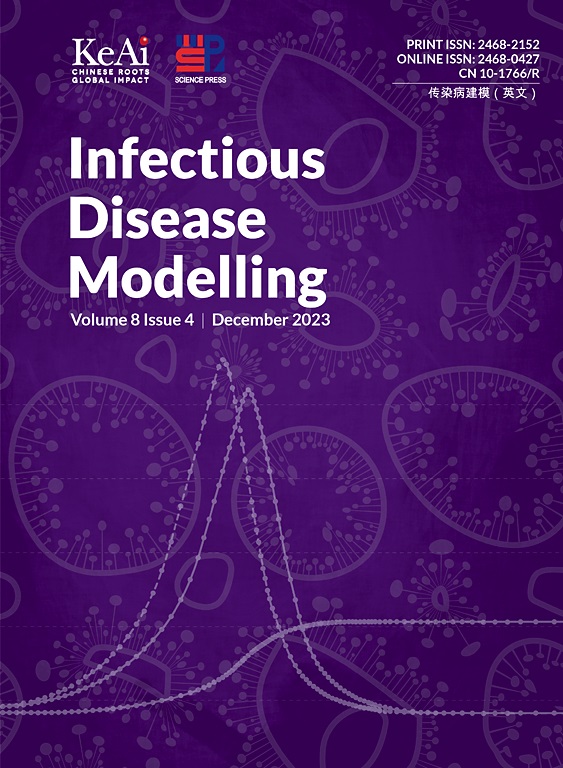基于昆虫不育技术的寨卡病毒传播动力学建模、分析与优化控制
IF 2.5
3区 医学
Q1 Medicine
引用次数: 0
摘要
昆虫不育技术(SIT)已成为抑制蚊媒疾病的一种有前途的工具。本研究建立了一个整合SIT的寨卡病毒传播模型,强调蚊媒传播途径和环境水生传播途径。与以根除为重点的方法不同,该模型通过释放不育雄性蚊子来抑制种群,从而控制不育蚊子和野生蚊子的共存。动力学分析揭示了临界阈值:当不育虫释放率b <; bp和Allee效应较弱(r < rp)时,系统稳定在共存平衡;超过这些阈值将导致人口崩溃。虽然低野生蚊子密度理论上可能有灭绝的危险,但从流行病学角度来看,这样的水平不足以引发疫情,因为病毒再次出现需要达到临界的种群密度。在共存条件下推导出基本繁殖数R0,表明R0 >; 1保证了病毒的持久性。此外,多目标最优控制框架优先考虑成本最小化而不是减少感染,提供资源效率策略。环境传播是寨卡病毒的一个特征,它加速了感染的早期传播,但SIT可以有效地减轻这种传播。这些结果为平衡蚊虫抑制和疾病控制建立了可操作的阈值(bp, rp),同时为登革热、疟疾和其他虫媒病毒疾病提供了理论见解。本文章由计算机程序翻译,如有差异,请以英文原文为准。
Modelling, analysis and optimal control of Zika virus transmission dynamics based on sterile insect technique
The sterile insect technique (SIT) has emerged as a promising tool for suppressing mosquito-borne diseases. This study develops a Zika virus transmission model integrating SIT, emphasizing both mosquito-borne and environmental aquatic transmission pathways. Unlike eradication-focused approaches, the model targets population suppression through sterile male releases, allowing controlled coexistence of sterile and wild mosquitoes. Dynamical analysis reveals critical thresholds: when the sterile insect release rate b < bp and Allee effects are weak (r < rp), the system stabilizes at a coexistence equilibrium; exceeding these thresholds drives population collapse. While low wild mosquito densities may theoretically risk extinction, such levels are epidemiologically insufficient to trigger outbreaks, as viral resurgence requires a critical population density. The basic reproduction number R0 was derived under coexistence conditions, demonstrating that R0 > 1 ensures viral persistence. Additionally, a multi-objective optimal control framework prioritizes cost minimization over infection reduction, offering resource-efficient strategies. Environmental transmission, a hallmark of Zika virus, accelerates early infection spread but is effectively mitigated by SIT. These results establish actionable thresholds (bp, rp) for balancing mosquito suppression and disease control, while providing theoretical insights applicable to dengue, malaria, and other arboviral diseases.
求助全文
通过发布文献求助,成功后即可免费获取论文全文。
去求助
来源期刊

Infectious Disease Modelling
Mathematics-Applied Mathematics
CiteScore
17.00
自引率
3.40%
发文量
73
审稿时长
17 weeks
期刊介绍:
Infectious Disease Modelling is an open access journal that undergoes peer-review. Its main objective is to facilitate research that combines mathematical modelling, retrieval and analysis of infection disease data, and public health decision support. The journal actively encourages original research that improves this interface, as well as review articles that highlight innovative methodologies relevant to data collection, informatics, and policy making in the field of public health.
 求助内容:
求助内容: 应助结果提醒方式:
应助结果提醒方式:


